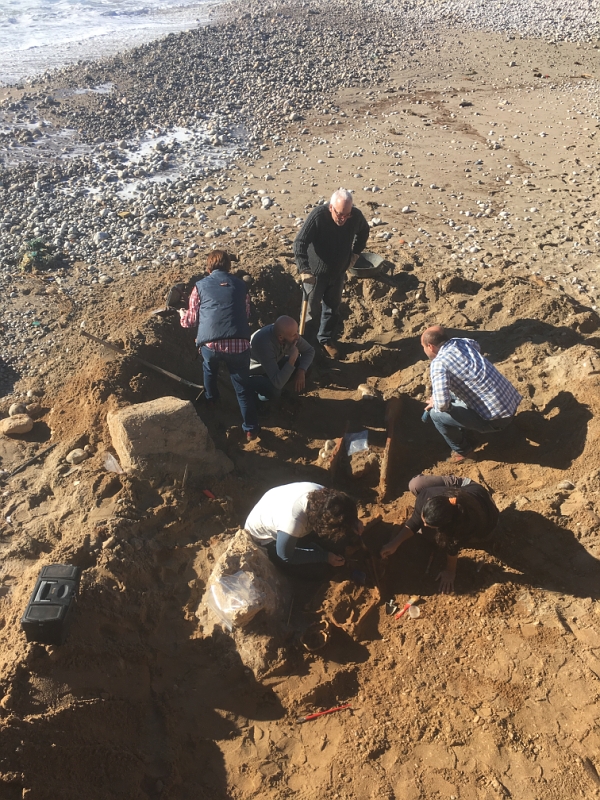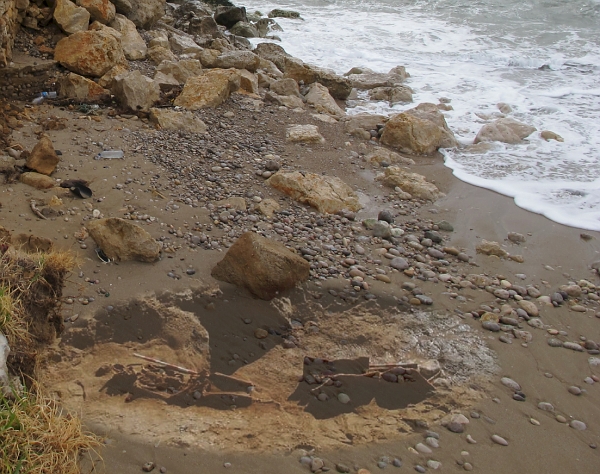Human remains found on Sitges Beach | Chadwell Heath Academy
9 February 2017
Chadwell Heath Academy A level Geography students undertaking their coastal fieldwork encountered an unexpected limitation to their study this morning: the discovery of human remains on a Sitges beach.
Coastal erosion from the worst storms for 15 years has revealed a Roman tomb with skeletons that correspond to three individuals. One is of a male of about thirty years of age, alongside the remains of a girl of about 16 years together with a few preserved fragments of a baby. The bodies are arranged side by side, within the tiles that initially formed a closed coffin.
Erosion over the past 2,000 years has led to the coastline retreating by 150 metres, bringing the tomb to the edge of the sea.
Some historians suggest that Sitges was a Roman nucleus located between Barcelona (Barcino) and Tarragona (Tarraco) mentioned in Latin texts of the first and second centuries. Other pieces of evidence of Roman occupation have been located in the district, including workshops in Sitges historic quarter, wine presses in Les Forques (near Aiguadolç) and the Roman villa of Vinyet.

Chadwell Heath Academy A level Geography students undertaking their coastal fieldwork in Sitges, with the excavation of human remains on the beach in the background

Excavation of human remains on a Sitges beach

Archaeologists removed the remains before the next storm reclaimed the beach. This superimposition shows the location of the tomb.
